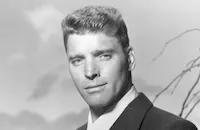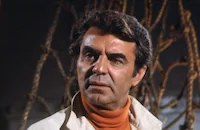Lancaster plays Joe Bass, an ignorant white trapper in the Old West whose furs are hijacked by a band of Kiowa Indians. The Kiowas trade a freed slave, Joseph Lee (Davis), for the furs but are soon attacked by a band of scalphunters led by Jim Howie (Savalas). Lee joins Howie's band with the idea of a subterfuge to reclaim the furs, but is caught and held captive by the scalphunters. Eventually the Kiowas track down Howie and his crew, and Bass and Lee are reunited by the film's climax.
American society was in a state of transition in the Sixties, and The Scalphunters is rich in metaphors about racism and violence. Joseph Lee is an educated, cultured man who is more used to reason than brute force; Joe Bass is illiterate and prone to using his fists to settle things. Both men are convinced of their superiority over the other until a climactic fight in a mud hole, where both rise covered with beige muck that makes their skin color identical. Pollack uses Callaghan's camera throughout the film to point out the relationships between characters through framing and camera angles (a distinctly Sixties stylization), not placing Lee and Bass on an equal visual plane with each other until toward the film's end. The casting proved to be a perfect fit, considering Lancaster's and Davis' involvement in the civil rights movement and other issues of the day. Still, the movie's social commentary is leavened with generous amounts of action and comic relief, to counteract any heavy-handed message mongering.
During production, stories abounded about Lancaster's volatile temperament and his dealings with former flame Shelley Winters and director Pollack, but probably the most troublesome aspect of the shoot was the blazing heat of the Torreon, Mexico locations. A special arrangement had to be made with the unions for the crew to start shooting at 5 am and knock off by l pm in the afternoon, before the temperatures became too unbearable.
As for that climactic knock-down-drag-out fight between Lancaster and Davis in a pool of mud, Gary Fishgall in his Burt Lancaster biography, Against Type, wrote "It was shot on a mesa high in the mountains in temperatures of 110 degrees. 'In order to get the mudhole,' Davis remembered, 'they had to pipe in water from much further down, and it was absolutely chilling.' When the actors came out, they were so cold they had to be wrapped in blankets, despite the sizzling heat. But to Davis at least, the result far outweighed the effort. In 1967 terms, he noted, the 'issue was how are we going to have a top box-office white fighting with somebody who was not his equal and black. It really wasn't done.' Then he added with a chuckle, 'Of course, Burt's response was, 'Bullsh#t.'"
Producer: Arthur Gardner, Roland Kibbee (uncredited), Burt Lancaster (uncredited), Arnold Laven, Jules Levy
Director: Sydney Pollack
Screenplay: William W. Norton (also story)
Cinematography: Duke Callaghan, Richard Moore
Costume Design: Joe Drury
Film Editing: John Woodcock
Original Music: Elmer Bernstein
Principal Cast: Burt Lancaster (Joe Bass), Shelley Winters (Kate), Telly Savalas (Jim Howie), Ossie Davis (Joseph Winfield Lee), Dabney Coleman (Jed), Nick Cravat (Yancy).
C-104m. Letterboxed.
by Jerry Renshaw























